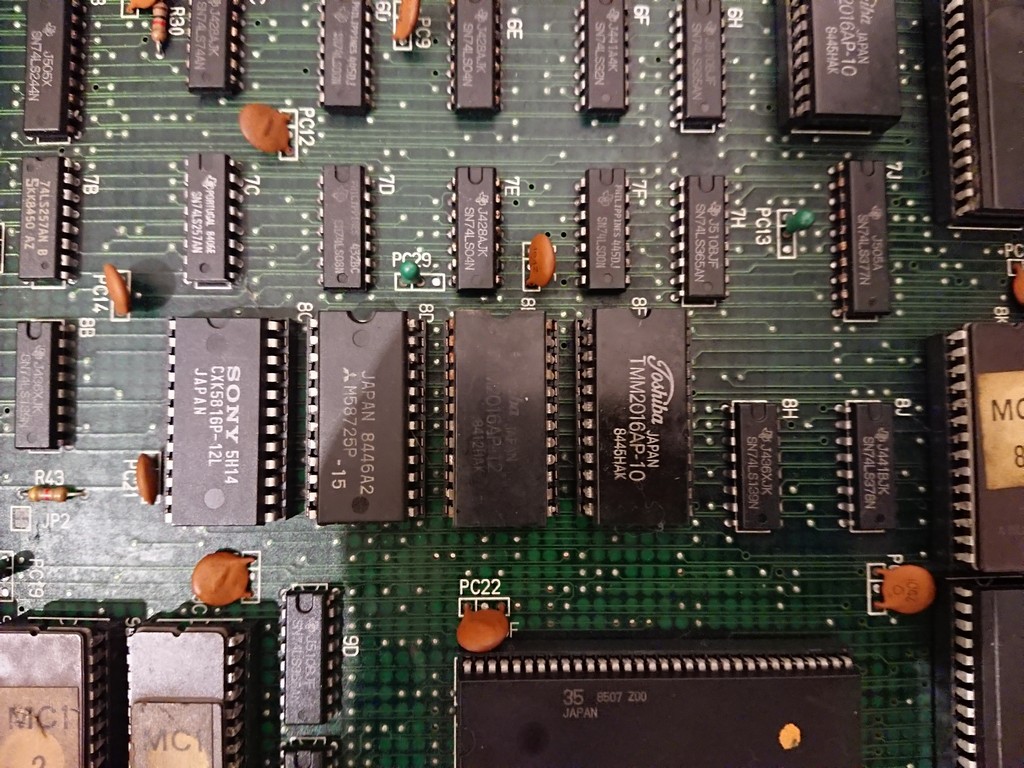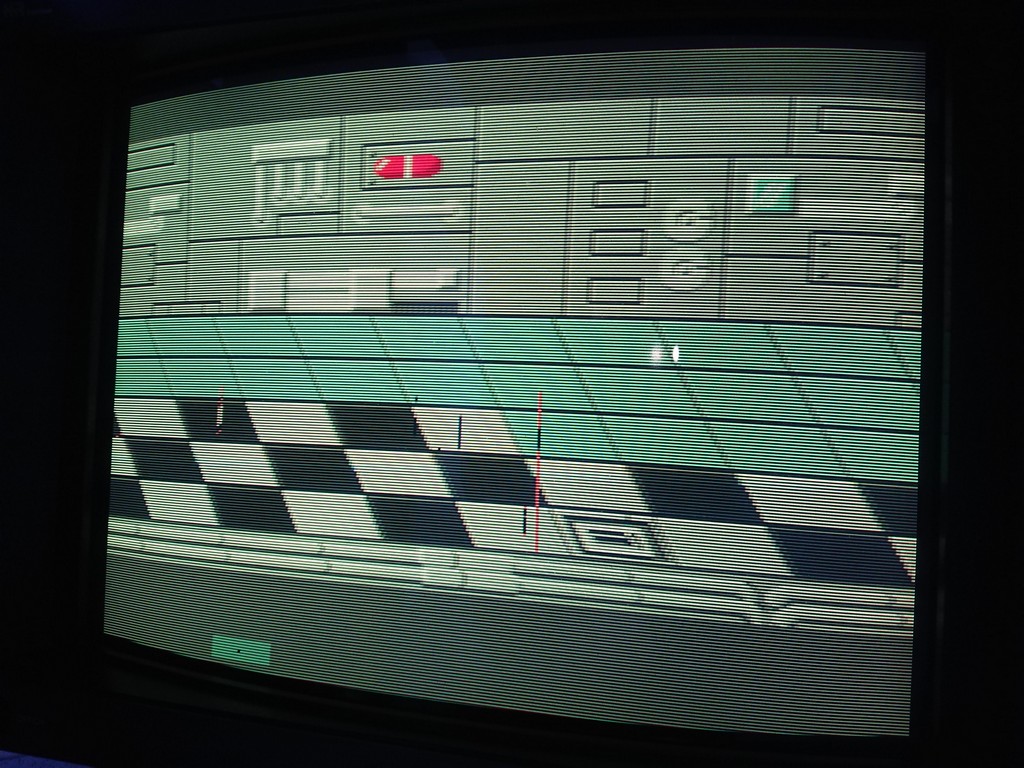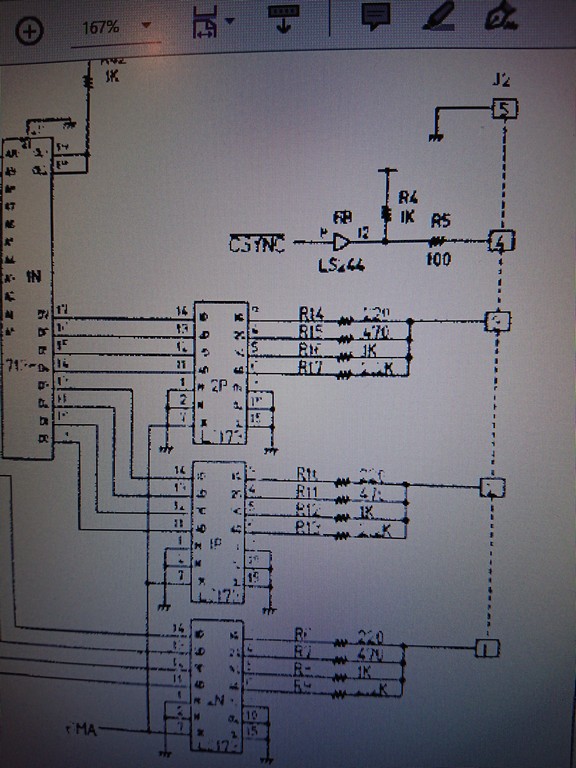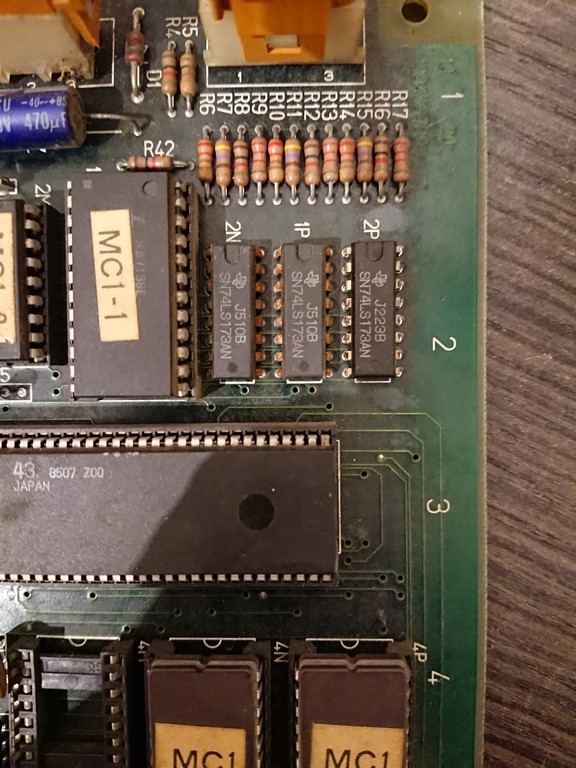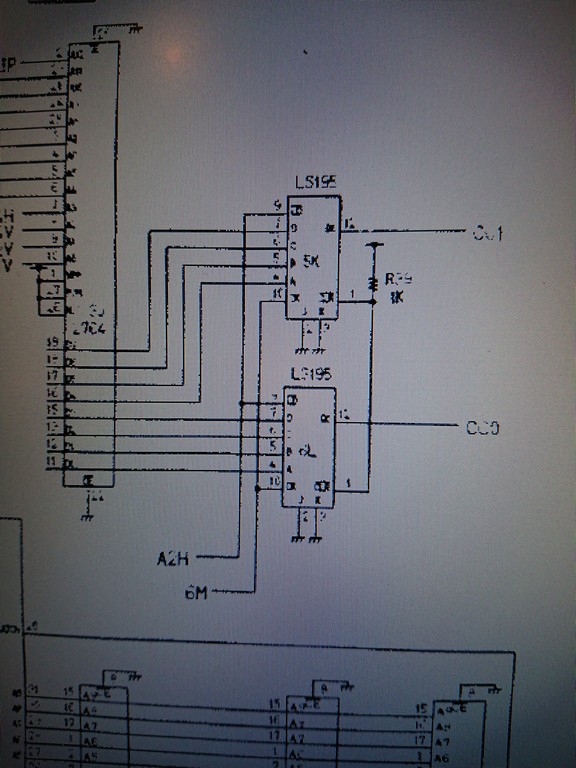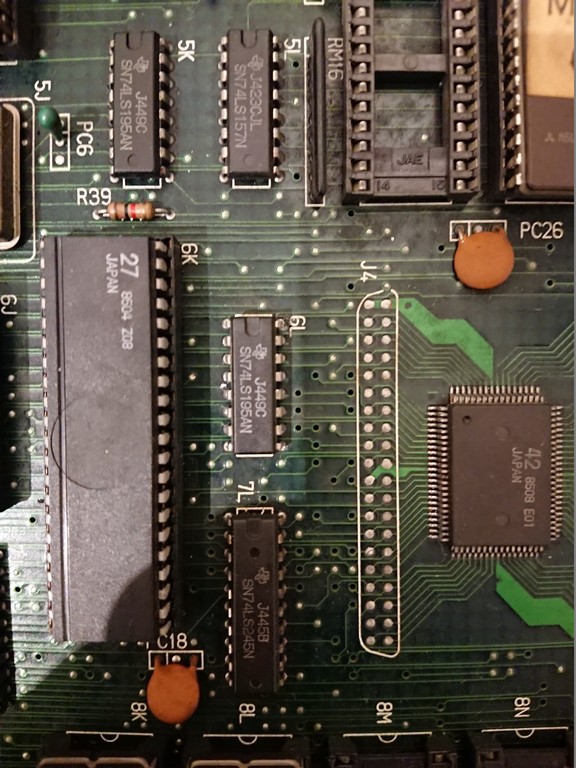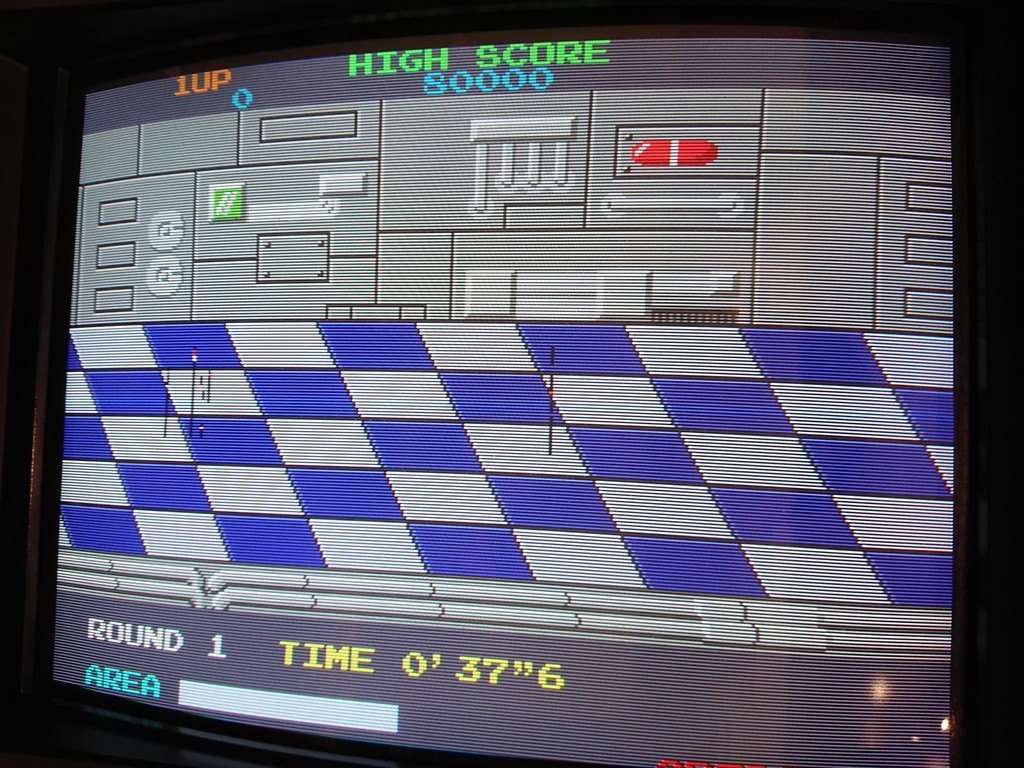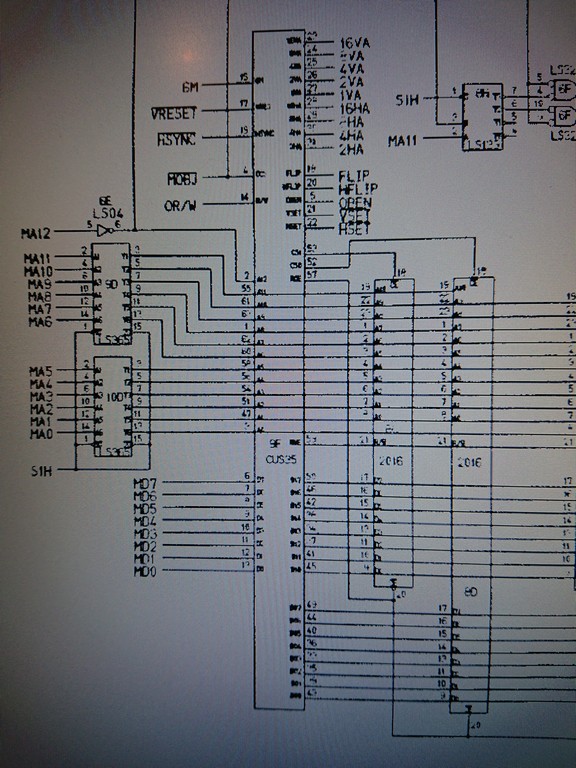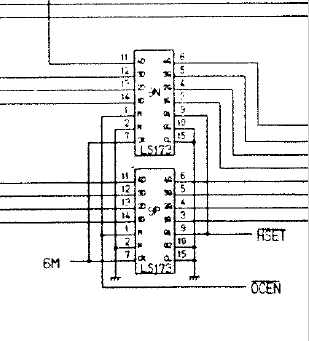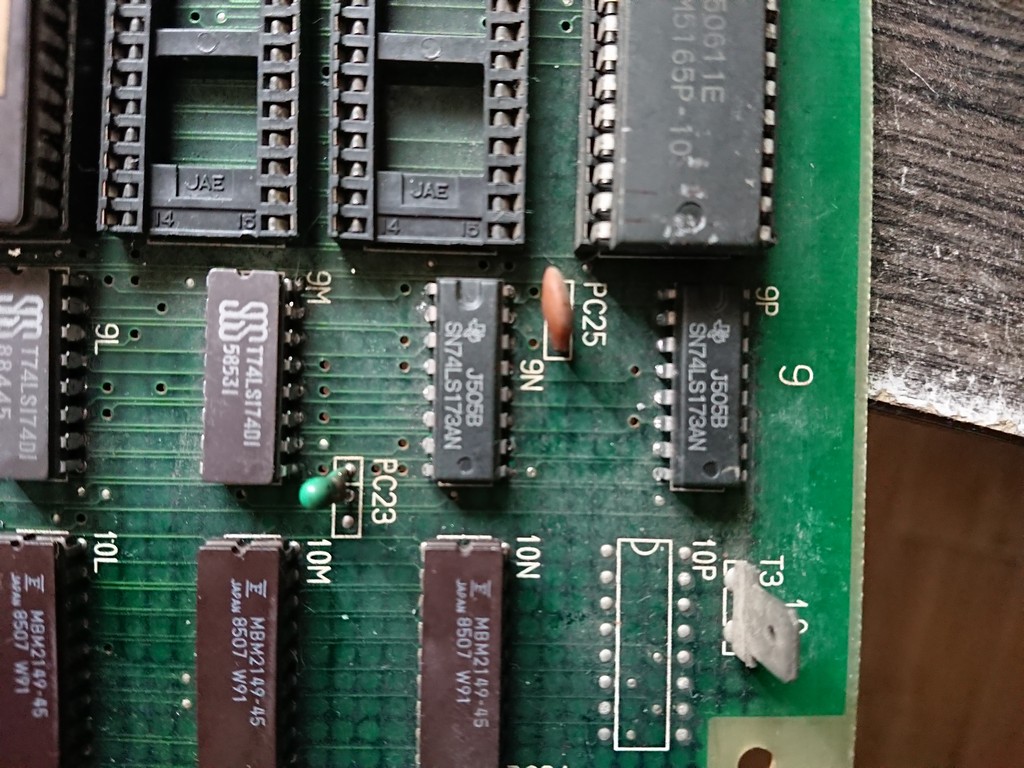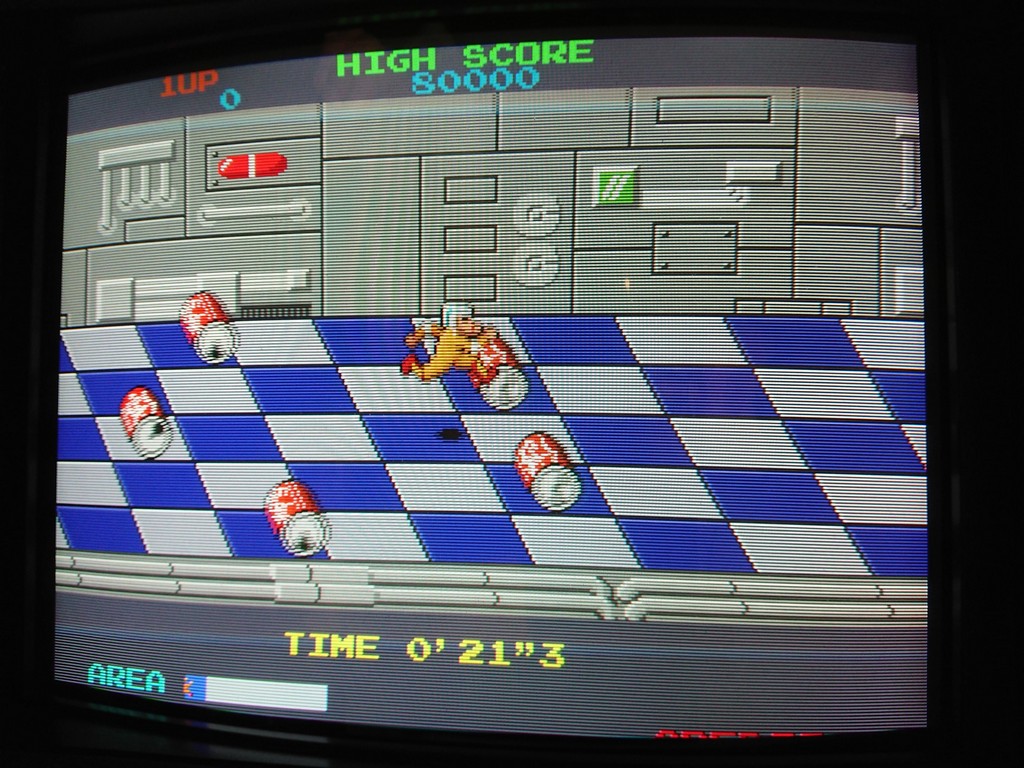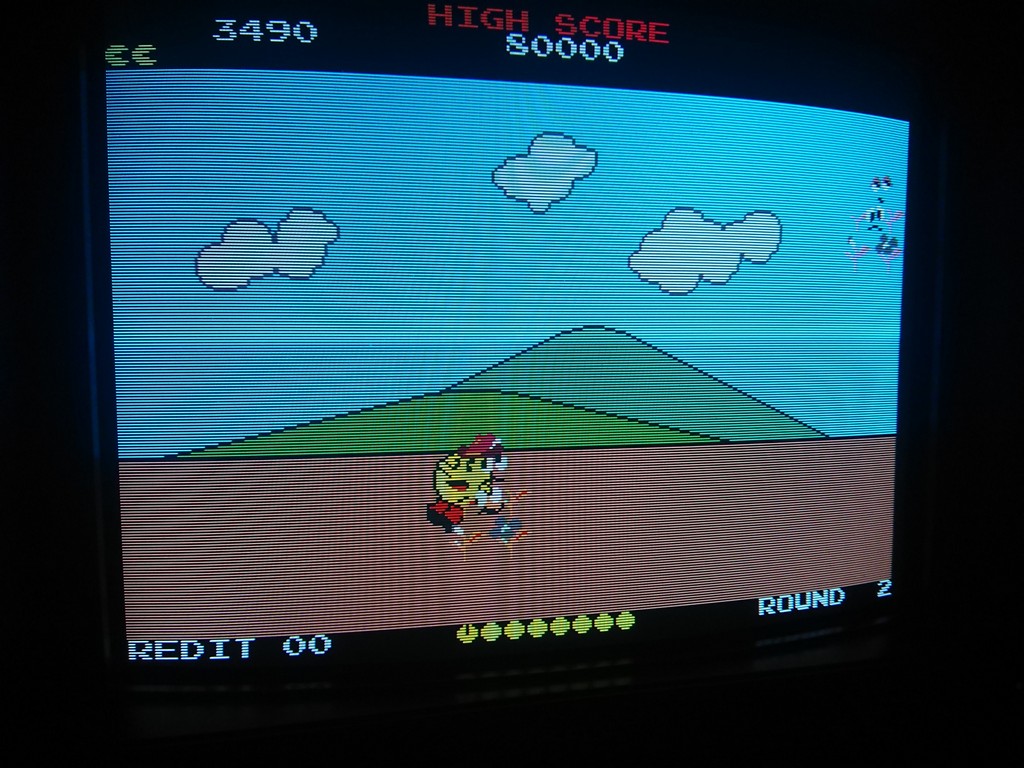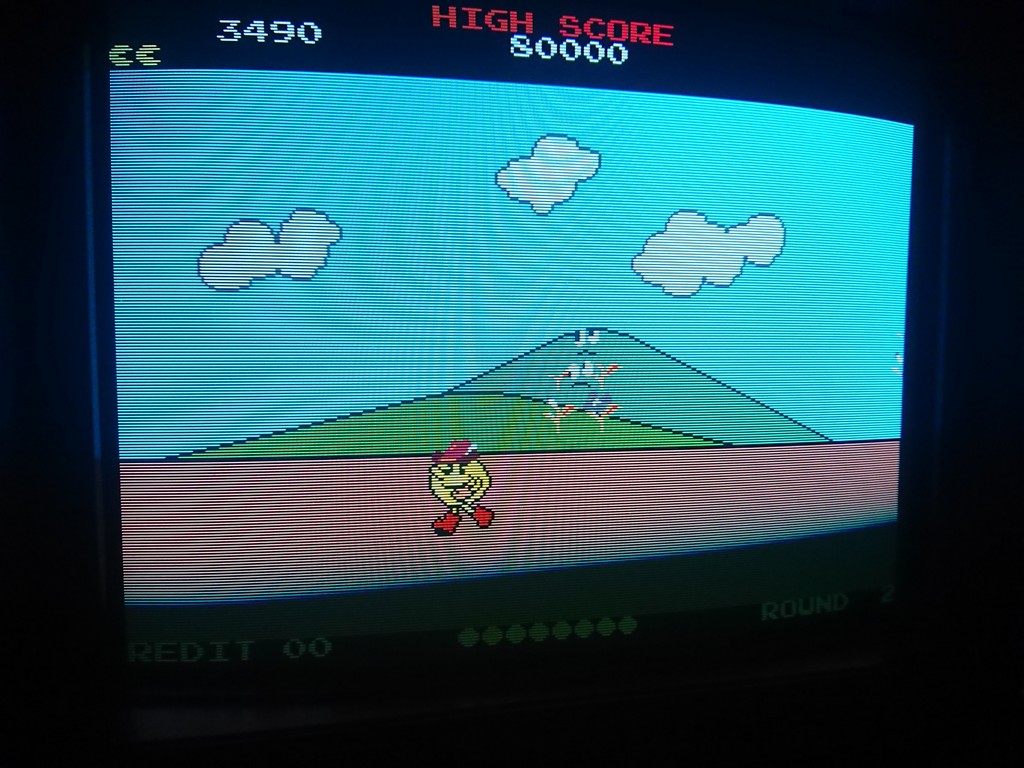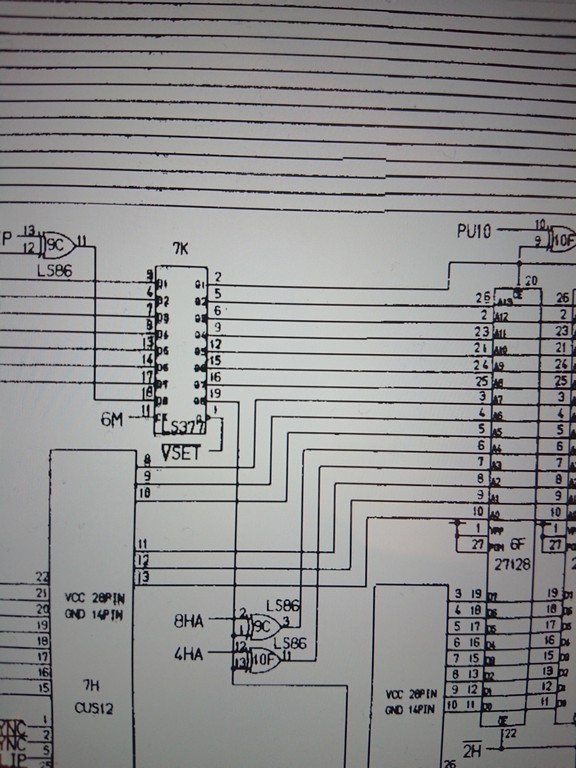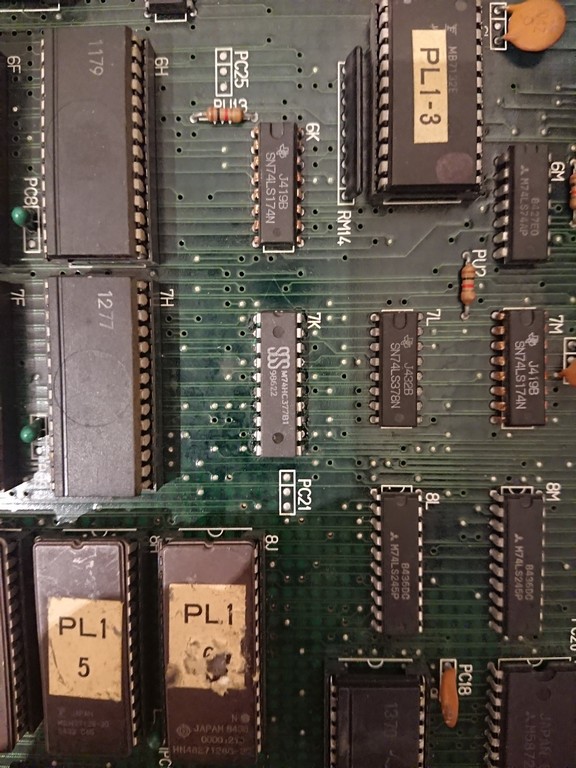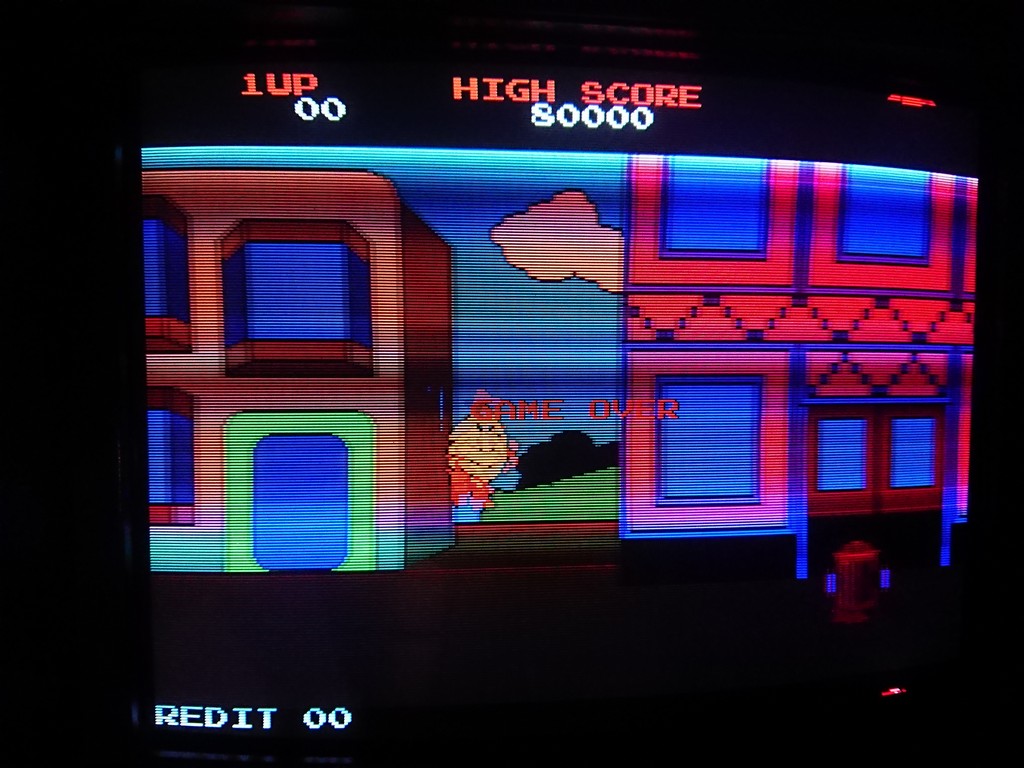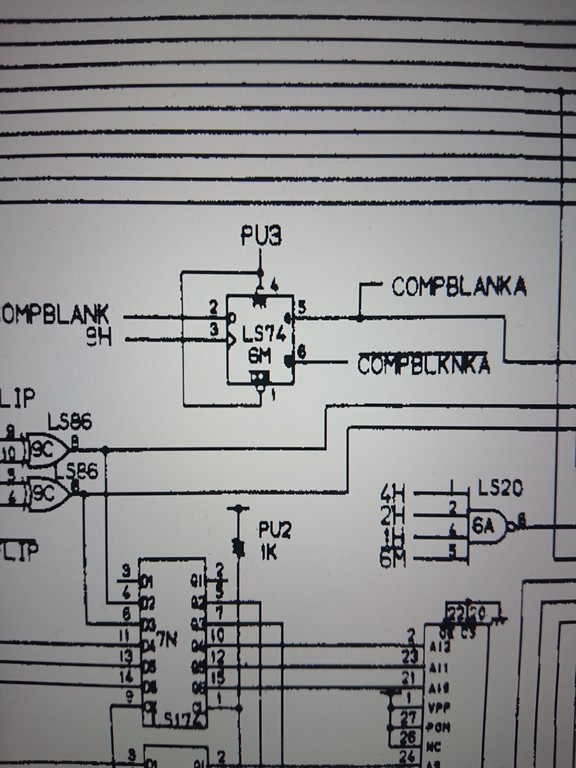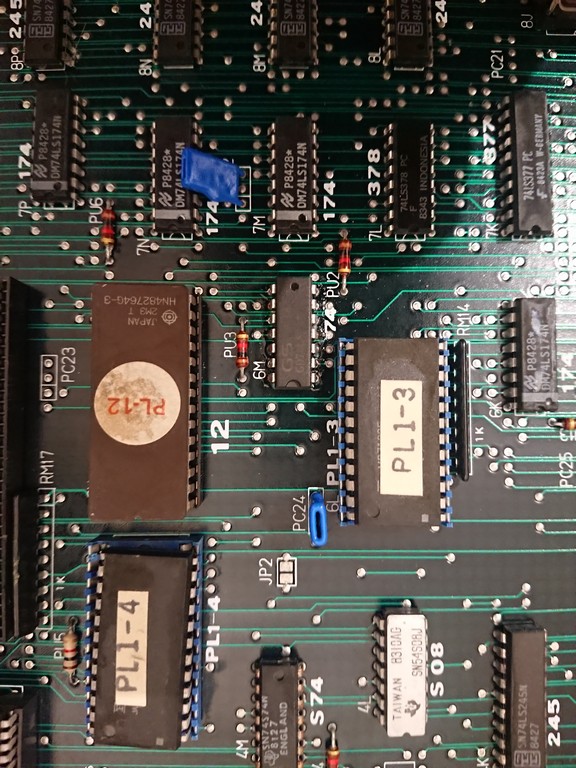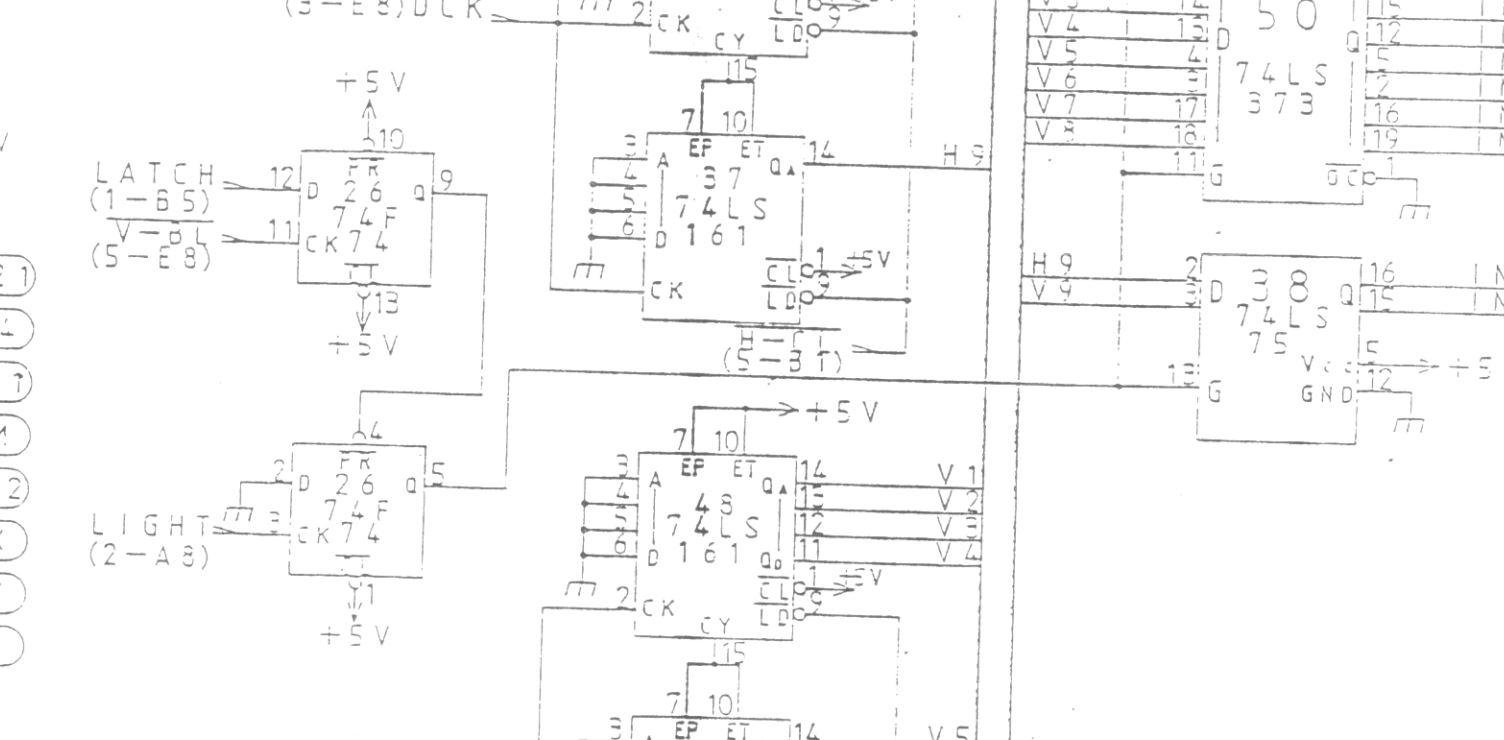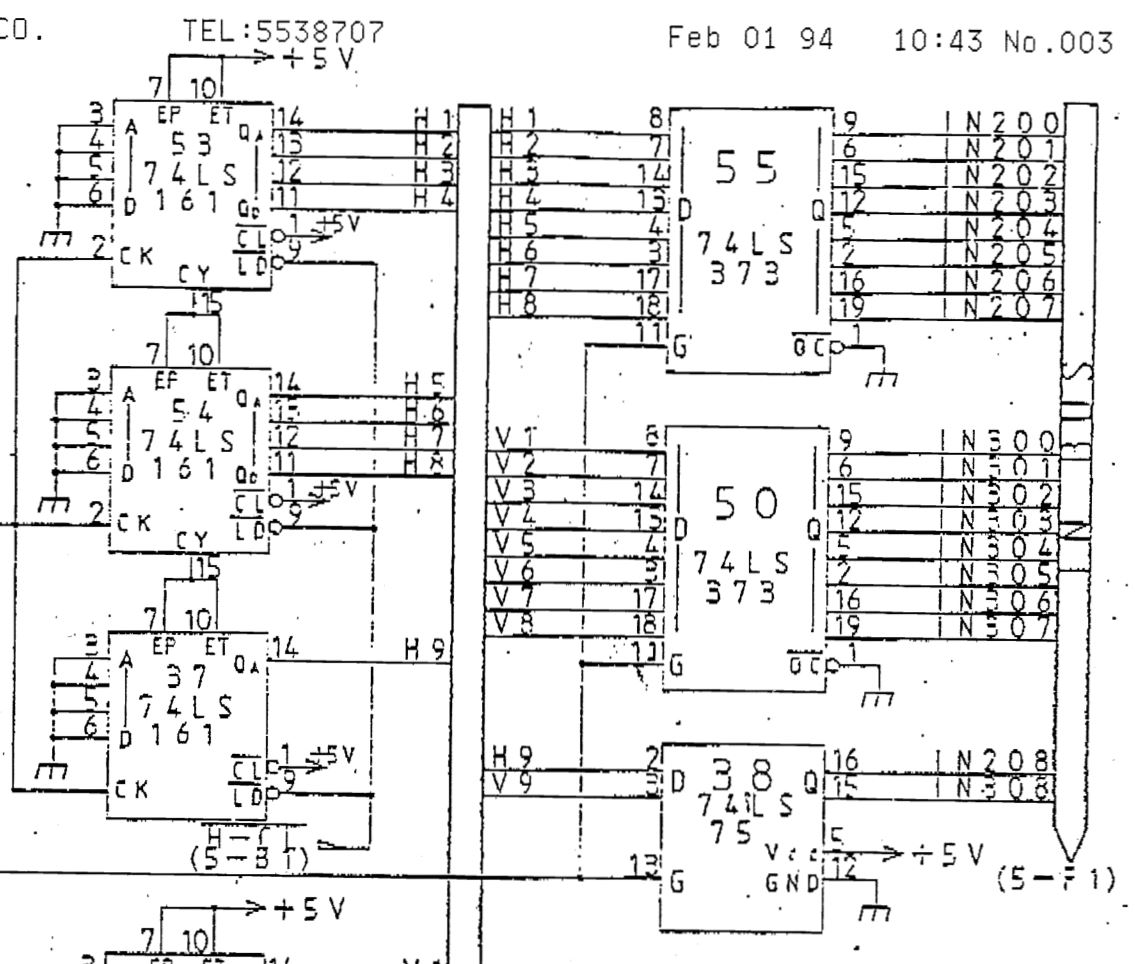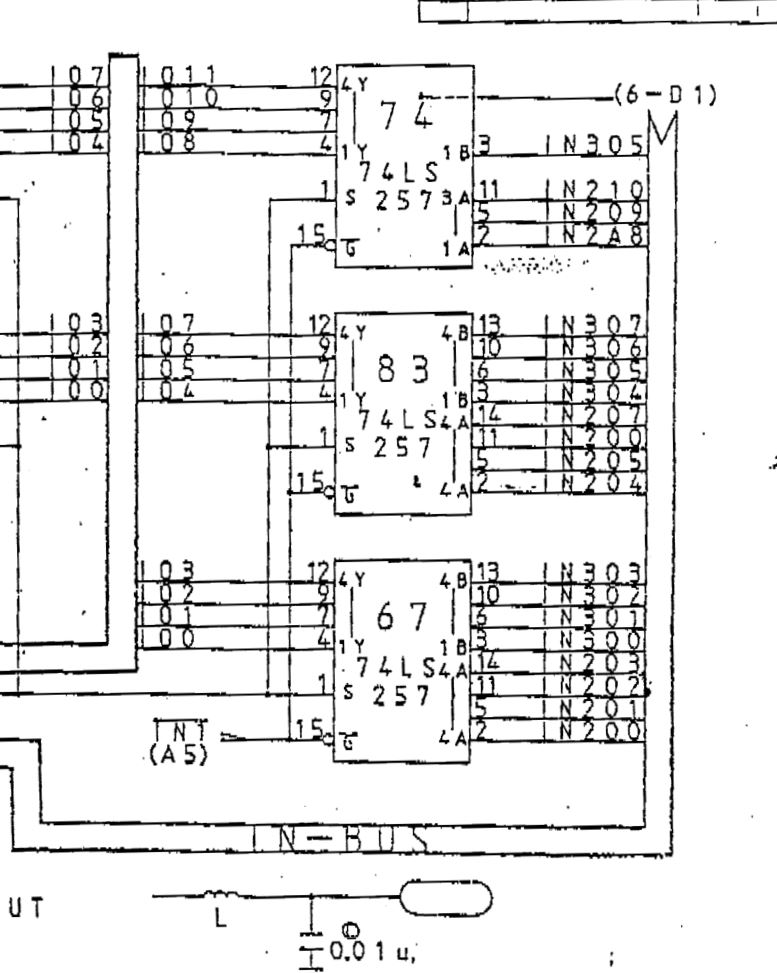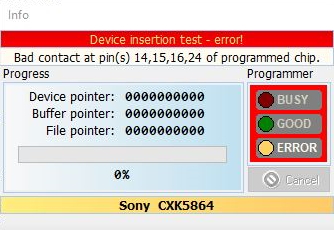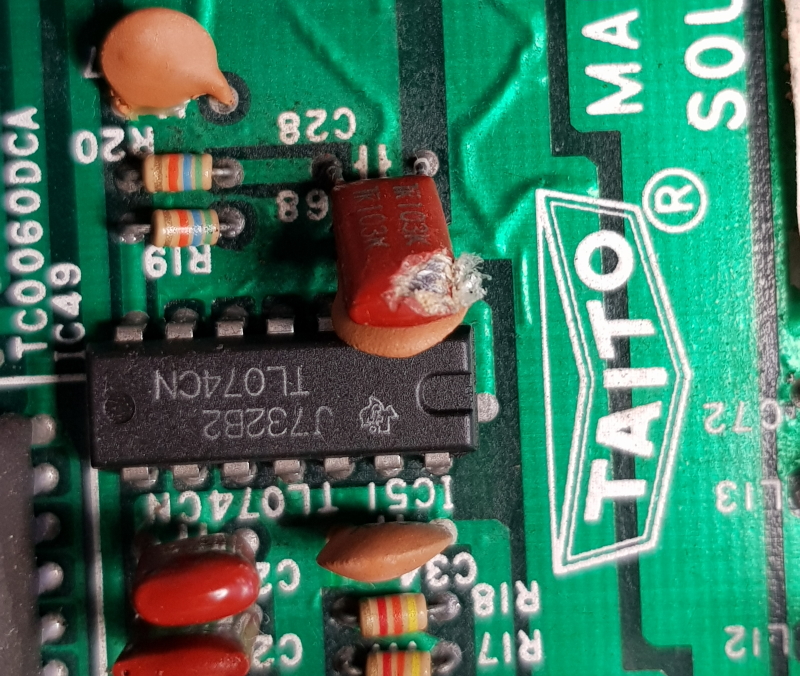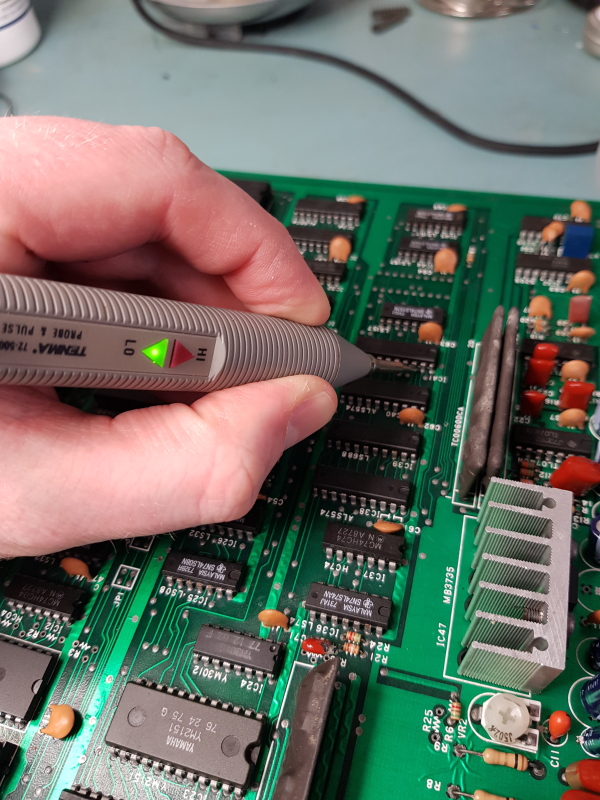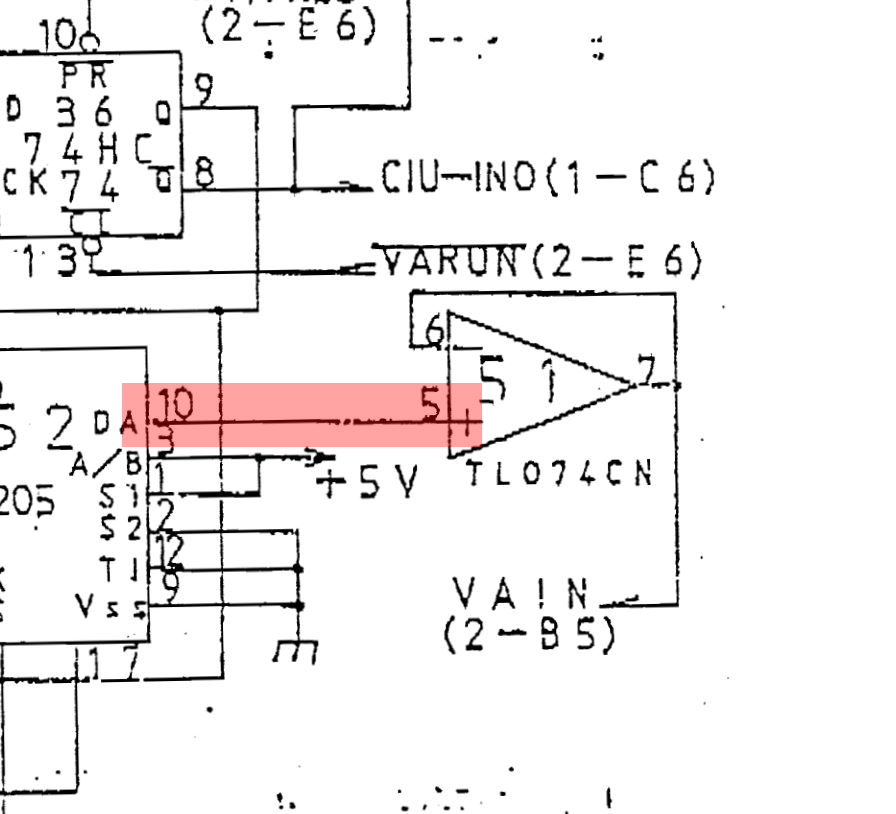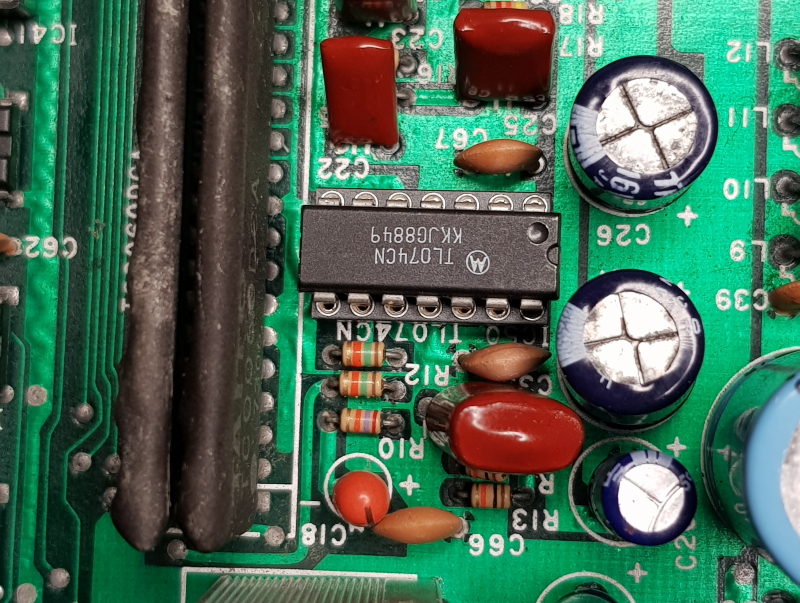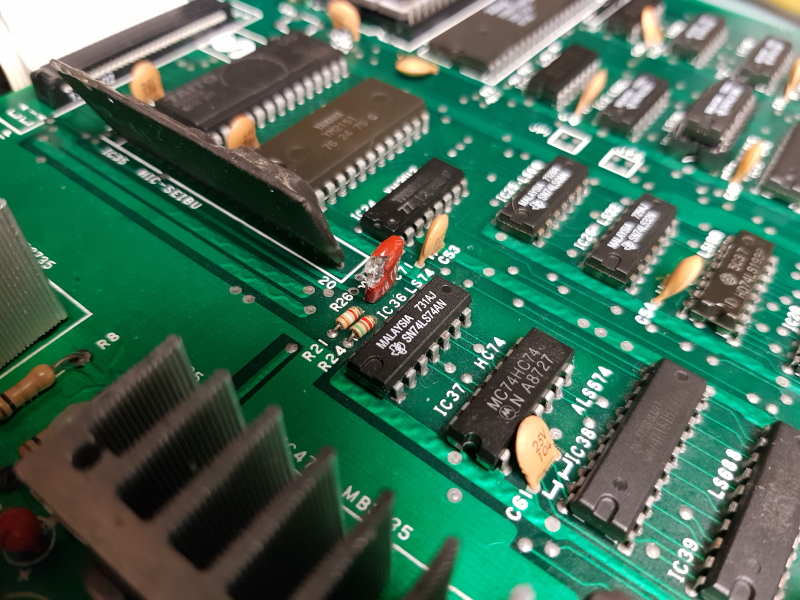Another few Operation Wolf boards in at the moment. This one is from Unit504.
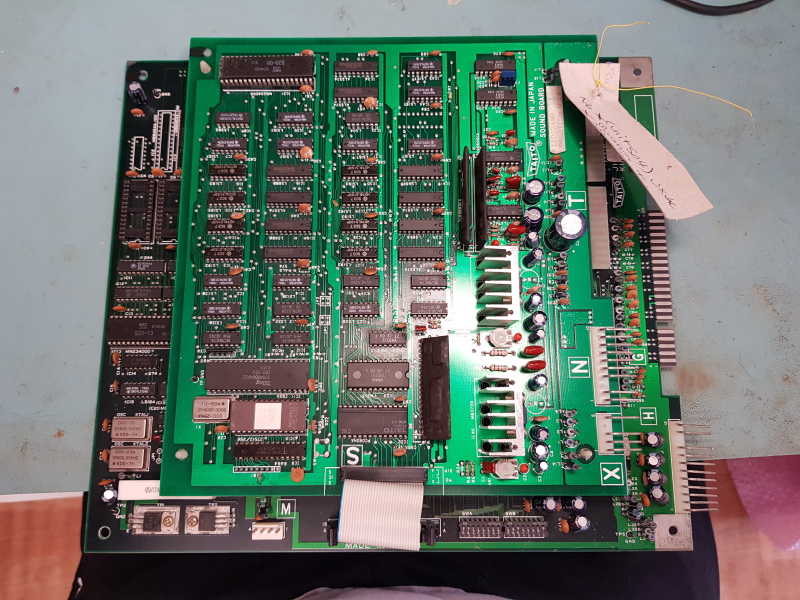
There is a nice little tag on this telling me the faults which really helps me keep all these boards together and where to start looking.
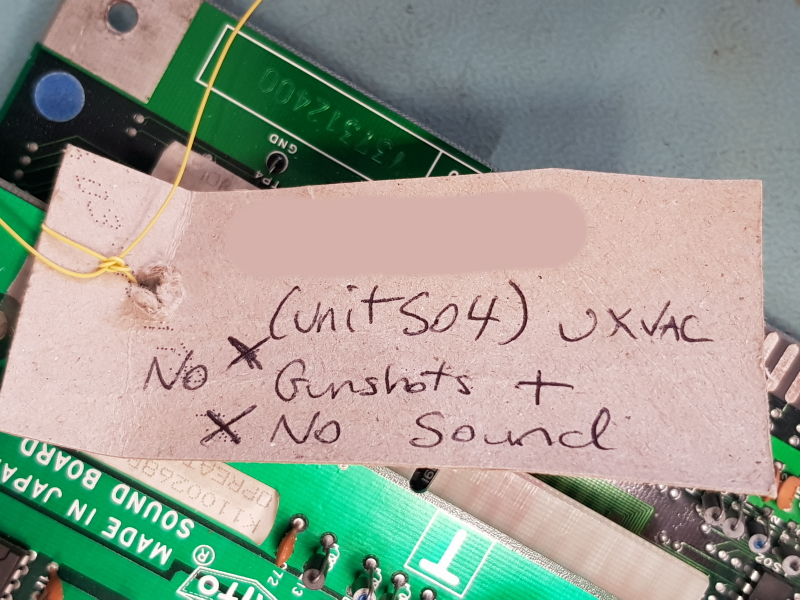
First job was to look into the gun shot register issue.
I did a quick test and could see the screen flash when the trigger was pulled so I knew that wasnt the fault
Following the circuit I come to the 74F74 IC which is used to latch the gun co-ordinates.
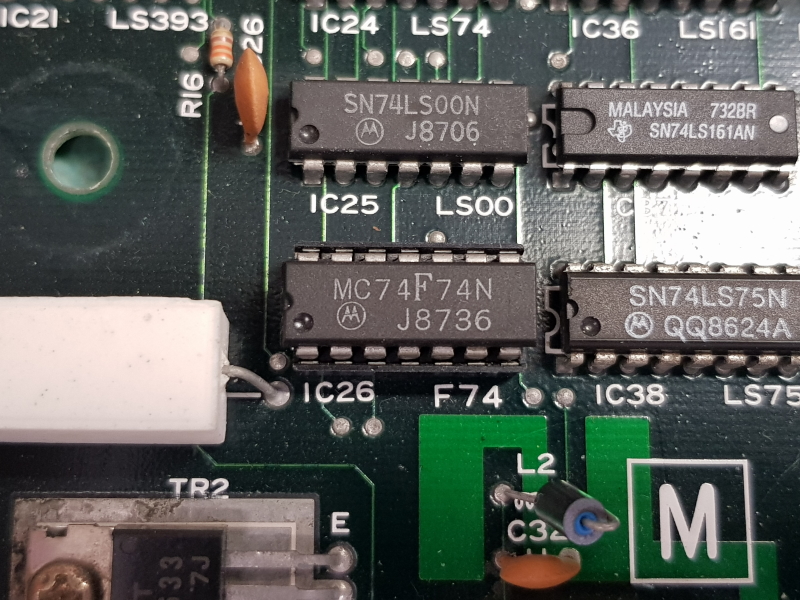
I normally wouldn’t start looking at this part but it was already socketed so decided to pull the chip and test it. It failed an out of circuit test.

I replaced this with a 74ALS74 and it seems to be be fine.
Now all the gun shots register as expected.
Next onto the sound.
None of the sounds were working at all and I didnt believe that all the seperate circuits for making sounds would be dead so looked a bit closer at the CPU side of things.
First off I checked the ROM and it dumped out fine.
Next the RAM. An inspection of the RAM showed signs of corrosion
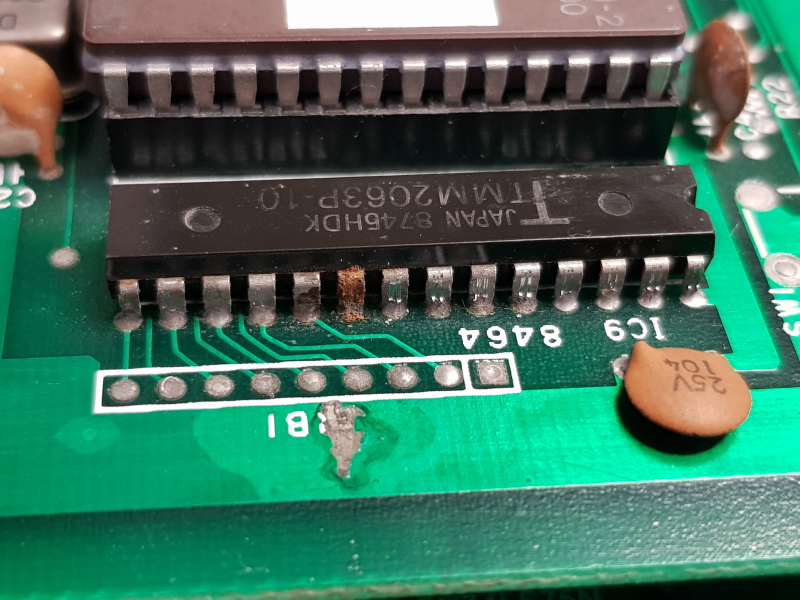
I removed and tested it and thankfully it failed
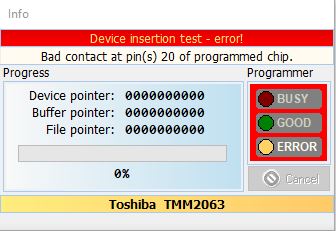
Looks like that corroded pin has broken contact somewhere. Anyway, replacing the RAM brought all the sound back to life and completed this repair.

